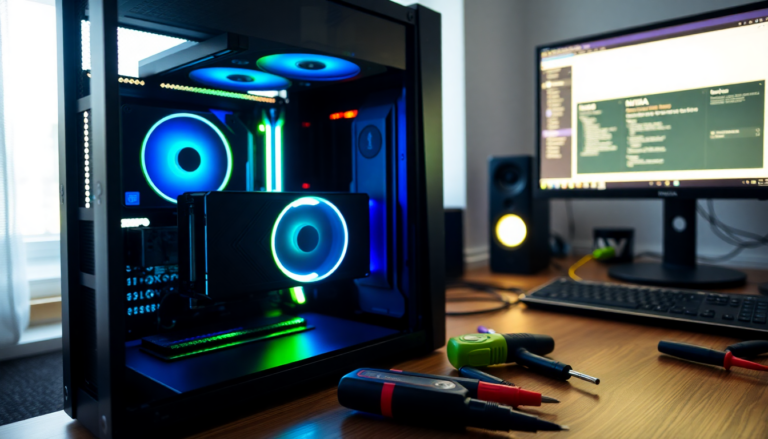Argomenti trattati
Updating your GPU’s vBIOS can feel like navigating a minefield, especially if you’re among the unfortunate RTX 5060 or RTX 5060 Ti users facing blank screens on reboot. Recently, Nvidia rolled out a firmware update to tackle these vexing issues, but it comes with a caveat: only those experiencing specific problems should consider this update. The intricacies of GPU firmware and compatibility can be daunting, but understanding them is key to avoiding potential pitfalls.
Understanding the vBIOS issue
The core of the problem lies in how Nvidia’s vBIOS interacts with your system’s BIOS or UEFI. If your motherboard lacks support for UEFI boot mode, Nvidia suggests reaching out to your GPU manufacturer for a legacy vBIOS update. It’s a bit of a mess, really, and while Nvidia hasn’t pinpointed the exact cause, their quick response indicates they’re aware of the implications. It’s like a game of tech roulette—one wrong move and you could be left in the dark, literally.
Many users have reported that the blank screen issue isn’t just a minor glitch; it’s a significant barrier to usability. Having dealt with similar issues myself, I can empathize with the frustration that comes from investing in high-end hardware only to face unexpected problems. The RTX 50 series has already had its share of hiccups, particularly with the notorious R570 driver branch. This chaos has even spilled over to older RTX 20, 30, and 40 series cards, showcasing a wider compatibility issue that Nvidia has wrestled with for weeks.
Steps to take for the vBIOS update
So, what should you do if your system is one of the affected ones? First, consider whether you really need to update the vBIOS. If you’re facing a black or blank screen after restarting, it might be time to take the plunge. But be warned: an abrupt power cut during the update could brick your GPU, which is a nightmare scenario. I remember a friend who lost his brand-new GPU to a power outage during a firmware update—talk about a bad day!
Fortunately, Nvidia has made things a bit easier with their utility designed to check compatibility with your system’s firmware. If you’re in the clear, you’ll first need to boot into your operating system—an additional hurdle if you’re already dealing with a display issue. To get back on track, Nvidia recommends downloading the NVIDIA GPU UEFI Firmware Update Tool v2.0. Running this executable will guide you through the necessary steps to apply the update.
Why just the RTX 5060 series?
This situation raises a curious question: why are only the RTX 5060 and 5060 Ti GPUs affected? Both models are based on the GB206 silicon architecture, yet older RTX cards seem to dodge this bullet. What changes in the design or manufacturing process led to this vulnerability? It’s a mystery that certainly keeps tech enthusiasts, including myself, scratching our heads.
As the tech landscape evolves, one can only wonder what other quirks lie in wait for users. With the rapid pace of development, it’s essential to stay informed and adaptable. After all, in the world of technology, change is the only constant. So, whether you’re a seasoned hardware enthusiast or a casual user, being proactive about updates can save you from future headaches and ensure your system runs smoothly.
At the end of the day, firmware updates like this one serve as a reminder that even the most sophisticated technology can falter. But with the right knowledge and tools, you can navigate these challenges with confidence.

